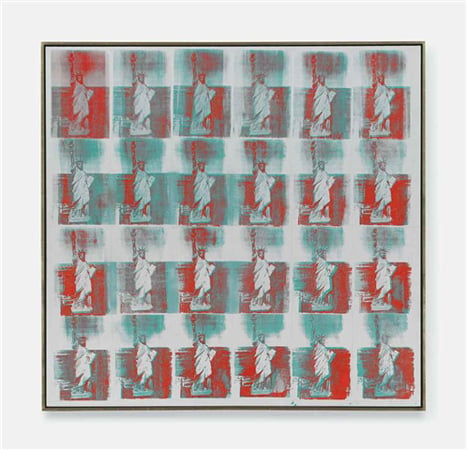Auctions
Top 10 American Artists of 2012
artnet Analytics presents the Top 10 American artists of 2012.

artnet Analytics presents the Top 10 American artists of 2012.

by
Lindsey Lovern and Jonathan Yee

In celebration of The Armory Show’s 100th anniversary, the curated Armory Focus will be dedicated to the United States and its Contemporary Art focus. Curated by Eric Shiner, director of The Andy Warhol Museum, the exhibition is scheduled to include 17 galleries and over 20 artists that together will present a snapshot of America and its art.
Top 12 American Artists of 2012 A–Z:
| Rank and Name | Total Sales Volume |
| 1 Andy Warhol | $380,700,864 |
| 2 Mark Rothko | $187,165,870 |
| 3 Jean-Michel Basquiat | $161,505,500 |
| 4 Alexander Calder | $149,210,674 |
| 5 Roy Lichtenstein | $127,295,617 |
| 6 William de Kooning | $75,087,870 |
| 7 Franz Kline | $69,686,814 |
| 8 Cy Twombly | $66.806,008 |
| 9 Jackson Pollock | $63,596,090 |
| 10 Jeff Koons | $43,841,954 |
To pay homage to the art of the United States, artnet Analytics has listed the Top 10 American artists of 2012 above. Pop artist Andy Warhol unsurprisingly claims the top spot, with US$380 million in sales during the 2012 auction season. Mark Rothko and Jean-Michel Basquiat round out the Top 3 spots, with a total sales volume of US$348 million combined. Keep your eye out next week for our in depth analysis of Warhol’s market.

Top Selling Warhol Lot of 2012, Andy Warhol, Statue of Liberty, 1962, Sold at Christie’s New York for US$43.7 million in November 2012
Andy Warhol (American, 1928–1987) was an iconic Pop artist whose works continue to influence American Contemporary Art and its market. In 1949, Warhol began his career as a commercial artist in New York City; however, as time progressed, so did his desires. In the 1960s, Warhol evolved into an independent artist. During this time, he created “low art,” which portrayed images deprived of emotion. He produced these works by commercial techniques such as screen printing. His early work included some of his most famous series, such as Campbell’s Soup Cans, Disasters, Electric Chairs, and celebrity portraits.
In order to facilitate the continued manufacturing of his art, Warhol constructed his studio, aptly called The Factory, on E. 47th Street. Additionally, it was at this time that Warhol delved into film and video. He created a number of experimental films, such as Sleep (1963), Chelsea Girls (1966), and Empire (1963).
In 1968, Warhol suffered a gun-shot wound from Valerie Solanas. The event had a significant impact on him, and he withdrew from his bohemian circle. In the 1970s, Warhol focused on celebrity portraits; this artistic choice weakened his critical approval. However, his work was revitalized through collaborations with younger artists. In the 1980s, he worked extensively with Jean-Michel Basquiat, Francesco Clemente, and Keith Haring. The Andy Warhol Foundation for the Visual Arts was established shortly after the artist’s death in 1987.